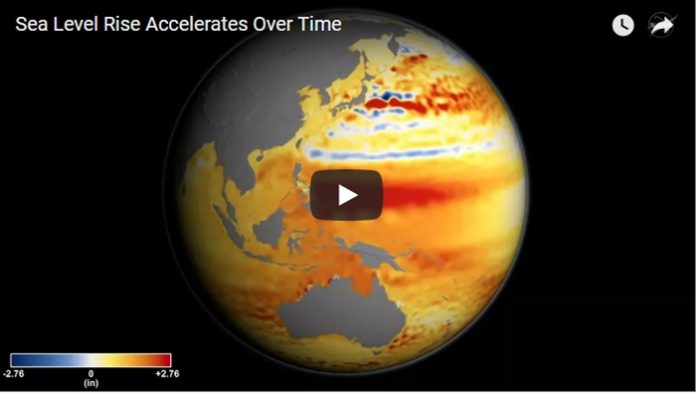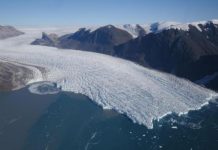Feb. 14 (UPI) — New research shows sea level rise isn’t constant but accelerating. According to the new calculation, sea levels will rise an average of 26 inches by the end of the century.
“This is almost certainly a conservative estimate,” Steve Nerem, a professor and researcher fellow at the University of Colorado’s Cooperative Institute for Research in Environmental Sciences, said in a news release. “Our extrapolation assumes that sea level continues to change in the future as it has over the last 25 years. Given the large changes we are seeing in the ice sheets today, that’s not likely.”
Scientists used satellite images to measure rates of sea level rise over the last two-and-a-half decades. The numbers suggest seas are rising faster over time.
In the early 1990s, seas rose an average of 0.1 inches each year. Today, seas are rising an average of 0.13 inches per year.
The tidal data used in the most recent analysis — published this week in the journal PNAS — was collected by a constellation of Earth-observing satellites managed by NASA, NOAA and other international space and weather agencies.
Scientists suggest the acceleration of sea level rise is the result of the ongoing destabilization of Earth’s ice sheets.
“As this climate data record approaches three decades, the fingerprints of Greenland and Antarctic land-based ice loss are now being revealed in the global and regional mean sea level estimates,” said Brian Beckley, a researcher at NASA’s Goddard Space Flight Center.
It’s not the first time scientists have suggested sea level rise is accelerating, but most such predictions have been based on climate models and computer simulations. The newest research is based on direct observations.
“The acceleration predicted by the models has now been detected directly from the observations. I think this is a game-changer as far as the climate change discussion goes,” said researcher Gary Mitchum, a professor at the University of South Florida’s College of Marine Science. “For example, the Tampa Bay area has been identified as one of 10 most vulnerable areas in the world to sea level rise, and the increasing rate of rise is of great concern.”





